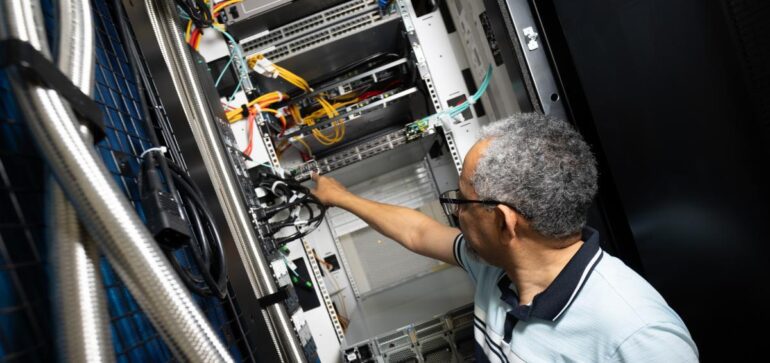- Nvidia and Georgia Tech collaborate to introduce an AI supercomputer for student use.
- Nvidia’s GPUs power large language models developed by major tech players.
- The initiative aims to democratize access to advanced computing resources.
- Initially available to Georgia Tech undergraduates, with plans for expansion.
- OpenAI recently partnered with Arizona State University to pursue similar endeavors.
- The supercomputer comprises 20 Nvidia HGX H100 systems, housing 160 Nvidia H100 GPUs.
- Students can utilize the supercomputer for various projects spanning AI, robotics, and more.
- The collaboration signifies a significant step towards integrating AI into academia.
Main AI News:
In a groundbreaking collaboration, Nvidia and the Georgia Institute of Technology have unveiled the inaugural artificial intelligence supercomputer tailored explicitly for student utilization. This venture marks a pivotal moment in academia, ushering in a new era of democratized access to cutting-edge computing resources previously monopolized by tech behemoths and select startups.
At the core of this pioneering initiative lies Nvidia’s industry-leading graphics processing units (GPUs), the driving force behind the creation of expansive language models by tech giants such as OpenAI, Alphabet, and Meta. With a burgeoning array of heavily-funded startups also vying for prominence in the realm of generative AI, Nvidia’s GPUs have become indispensable components powering this transformative landscape. The company’s meteoric rise in revenue and market capitalization, surpassing even industry titans like Alphabet and Amazon, underscores the seismic impact of its technological prowess.
This strategic alliance between Nvidia and Georgia Tech underscores a collective commitment to cultivating the next-generation workforce adept in the nuances of artificial intelligence. By providing students with unfettered access to state-of-the-art computing clusters, fueled by Nvidia’s enterprise AI software and augmented by a sophisticated “virtual gateway” developed by Penguin Solutions, both entities aim to equip learners with invaluable hands-on experience essential for navigating the complexities of modern AI-driven industries.
Initially, access to this cutting-edge computing infrastructure will be exclusive to undergraduate students at Georgia Tech. However, plans are underway to progressively expand utilization, with the goal of extending access to all undergraduate and graduate students by spring 2025. Arijit Raychowdhury, Chair of Georgia Tech’s School of Electrical and Computer Engineering, emphasized the pivotal role of this initiative in empowering students to harness the full potential of AI technologies.
This landmark announcement follows in the wake of OpenAI’s recent foray into academia, culminating in a partnership with Arizona State University. Leveraging ChatGPT Enterprise, ASU aims to integrate AI capabilities across various educational domains, including coursework, tutoring, and research endeavors.
At the heart of Georgia Tech’s AI supercomputer are 20 Nvidia HGX H100 systems, housing a total of 160 Nvidia H100 GPUs. These GPUs, renowned for their unparalleled performance and versatility, represent a coveted asset within the tech ecosystem. A staggering testament to their computational prowess, a single Nvidia H100 GPU can execute a multiplication function in mere seconds, a task that would take 50,000 students over two decades to accomplish.
Students will leverage this formidable computing infrastructure across diverse disciplines, spanning computer vision, natural language processing, robotics, supply chain management, and biomedical engineering. Moreover, the supercomputer will serve as a creative incubator, fostering innovation in generative AI and providing a platform for entrepreneurial pursuits.
In the words of Arijit Raychowdhury, the visionary behind this transformative initiative, “Our aim is to establish a collaborative ecosystem in partnership with Nvidia and Penguin Solutions, offering students a dynamic sandbox to explore and innovate.”
This groundbreaking collaboration between Nvidia and Georgia Tech heralds a new dawn in academia, where the convergence of AI and education paves the way for boundless innovation and empowerment. Through strategic alliances and visionary leadership, institutions can unlock the full potential of AI, shaping a future where knowledge knows no bounds.
Conclusion:
The partnership between Nvidia and Georgia Tech, culminating in the introduction of an AI supercomputer for student use, signifies a paradigm shift in education. By democratizing access to advanced computing resources and fostering interdisciplinary collaboration, this initiative not only empowers students but also propels the integration of AI into academic curricula. This convergence of technology and education heralds a transformative era, where institutions must adapt to harness the full potential of AI-driven innovation.

